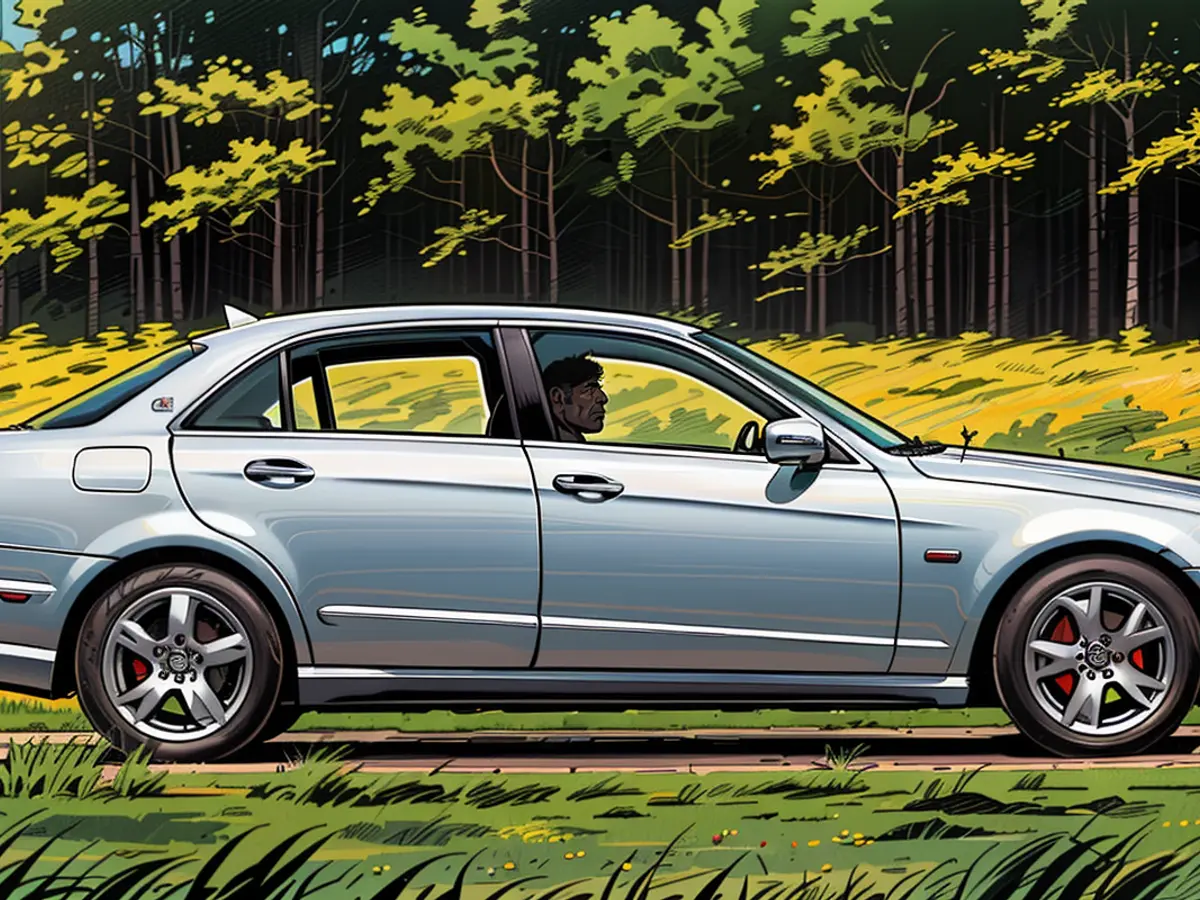Mercedes E-Class Suffers Slightly from Premium Issues
Executive's preferred choice: Among top-level business managers, the Mercedes E-Class still ranks as one of the most favored corporate vehicles. Thanks to its high level of safety, comfortable ride, and ample space, even in the back seat, adults can find a cozy fit. This model also appeals to many taxi companies and their passengers due to these features. However, the vehicle has shown some minor faults during the vehicle inspection (HU), according to the "Auto Bild TÜV-Report 2024".
Model History
Mercedes introduced the E-Class model designation in 1993 - now in its sixth generation. The fourth (Type 212) and fifth (Type 213) series were released in 2009 and 2016, respectively.
Mercedes gave the vehicle facelifts in 2013 (front and new assistants) and 2020 (refined driving assistance systems, e.g., moving to the side on the highway below 60 km/h for emergency lane formation). The current E-Class (Type 214) hit the market in 2023.
Body and Variants
The E-Class is available as a sedan and a T-Model (station wagon). Both generations have been built as a coupe and a cabriolet, but the Type 212 partly shares technology with the smaller C-Class.
The T-Model of Type 213 is also available as an All-Terrain with increased ground clearance and off-road capabilities. The E-Class is also available as a plug-in hybrid.
Dimensions (according to ADAC)
- Type 213: 4.83 to 4.97 meters x 1.85 to 1.91 meters x 1.43 to 1.50 meters (L x W x H), trunk volume: 360 to 1820 liters
- Type 212: 4.70 to 4.90 meters x 1.79 to 1.87 meters x 1.40 to 1.52 meters (L x W x H), trunk volume: 390 to 1950 liters
Strengths
The luxury model often travels long distances with minor issues. In the HU, drive shafts and mostly the steering, as well as the lighting of both types with low defect rates, shine even into old age.
Both models stand out with good performance, with low complaint rates for the electric parking brake of the 213. Brake hoses are never criticized, according to the TÜV report.
Weaknesses
"Suspension issues affect both generations," says the report. This is the case starting from the second HU, with chassis rust happening from the fourth check. Defective tie rod ends are also noticed in the 213. The mechanical parking brake of the 212 and its brake lines receive above-average high complaint rates.
Oil loss is a problem for some high-mileage vehicles at the first HU, but the rates for the first three appointments remain below average levels. Starting from the second HU, the E-Class tends to fail the exhaust gas test (AU) a bit more frequently.
Breakdown Behavior
From the roadside, the expected occurs: the younger the car, the more reliable it runs. That an upper-middle-class car ranks at the back is quite surprising.
In summary, the E-Class of the first registration years 2009 and 2010 appear in the ADAC breakdown statistics as "very unreliable". "Average reliability" is attributed by the club up to 2016, while the Mercedes lands in good standing from 2017.
Breakdown hotspots include starters, generally the steering, and the ignition lock (all in models with first registration between 2009 and 2011). Problems with 2009 models include generators and starter batteries.
Engines
- Type 213: Petrol (four, six, and eight-cylinder, rear and all-wheel drive): 135 kW/184 PS to 450 kW/612 PS; Diesel (four and six-cylinder, rear and all-wheel drive): 110 kW/150 PS to 250 kW/340 PS; Plug-in hybrid: 210 kW/286 PS and 235 kW/320 PS (system power)
- Type 212: Petrol (four, six, and eight-cylinder, rear and all-wheel drive): 135 kW/184 PS to 430 kW/585 PS; Diesel (four and six-cylinder, rear and all-wheel drive): 100 kW/136 PS to 195 kW/265 PS; Diesel hybrid: 150 kW/204 PS + 20 kW/27 PS; Natural gas: 115 kW/156 PS and 120 kW/163 PS
Dealer selling price according to the German Automobile Trust (DAT) with statistically expected kilometers - three price examples
Sure thing! Here's your request paraphrased:
- E 220 advanced limousine (6/2019); 194 ps/143 kw (four-cylinder); 107,000 km; 26,405 euros
- E 250 CGI avant-garde blue efficiency coupé (6/2013); 204 ps/150 kw (four-cylinder); 170,000 km; 11,408 euros
- E 400 d AMG line 4matic T-model (6/2020); 340 ps/250 kw (six-cylinder); 88,000 km; 35,199 euros
The Commission shall conduct a comprehensive evaluation of the reliability and performance of the Mercedes E-Class, considering its history, dimensions, strengths, weaknesses, and breakdown behavior.
Furthermore, the Commission shall provide recommendations to potential buyers, considering factors such as the age of the vehicle, the type of engine, and the dealer selling price.








